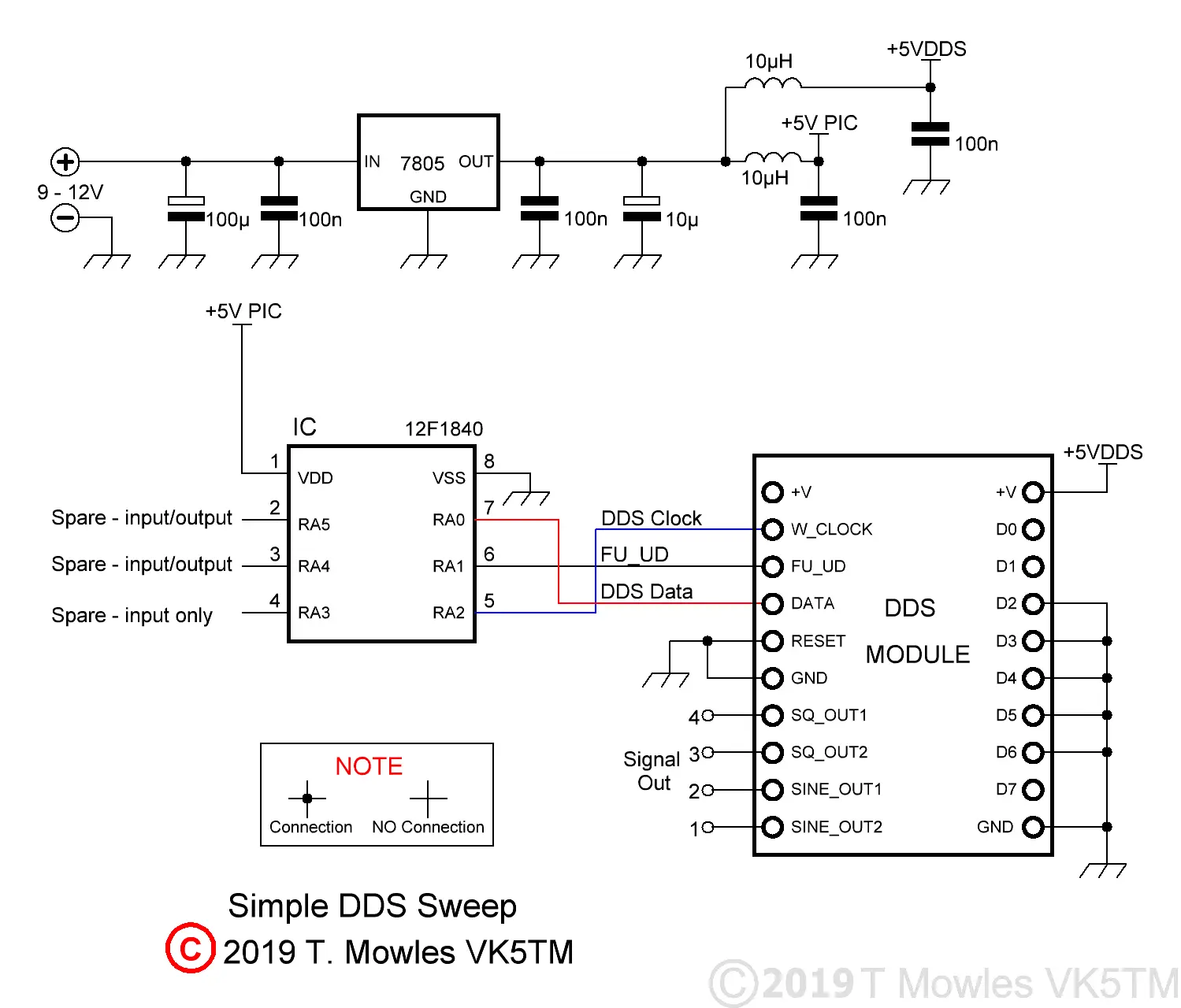News, Updates and Other Minutiae
August 2025 UR5WHK has created another version of the AD9833 project with a 128 X 32 OLED display. You can find it under the Gallery menu - it is on the same page as the MAX7219 version.
July 2025 UR5WHK has created an updated version of the AD9833 project which now includes a MAX7219 based LED display. Code updated 10 July 2025. Code updated again 15 July 2025. You can find it under the Gallery menu.
March 2025 In something of a "Seniors Moment", I forgot to update the homebrew menu and this section relating to a project I did late 2024. That project is an update of one from the RSGB Radcom magazine of Sept 1999 - 'Turn Your Dip Meter into a Signal Generator'. Presented here as 'Grid Dip Meter (GDO) Add on' under the Homebrew menu.
November 2024 Phillipe F6ETI has done some serious testing on the Noise Canceller and shown it works up to 72MHz and is usable with some loss at 145MHz. Links to his website with photo's, video's and description of the testing on the Noise Canceller page.
Privacy Policy uploaded. GPDR and all that stuff In accordance with various bits of legislation around the world, either currently in force, about to come into force or proposed, you will now find that annoying "We use cookies" notice at the top of this website. The full Privacy Policy is available at the Privacy Policy link in the footer at the bottom of the page. (If you don't know what GPDR is, Google it. Real scary shit for ANYBODY with a web presence.)
Simple Sweeper
A Simple DDS based sweeper using an 8-pin PIC.
This is a very basic, no frills and simple sweep unit using an AD9850 (or AD9851) module and a 8 pin PIC. It came about from a request by a user of my Simple DDS VFO. There are no bells and whistles, user controls (other than an on/off switch) or trigger output and the sweep frequency (beginning and end) needs hard programming in. The step frequency is hard coded at 5kHz in the demo software below (which sweeps 50kHz to 30MHz), but could be reduced to a smaller value if the beginning and end frequency are reduced to a smaller range. It takes approximately 1 second to sweep the range from 50kHz to 30MHz at 5kHz steps. This will increase to about 3 seconds if the step size is reduced to 1kHz. To get this rate of sweep, a much faster PIC than the 12F629 is required, so a 12F1840 running at 32MHz has been used. There are 3 pins unused currently, two of which can be either input or output and one that is an input only. With appropriate programming, extra features could be added using these pins. No option to calibrate the DDS frequency is available in the software, although it could be added if deemd necessary or, by trial and error, the Ref_osc values can be manually adjusted. Go at it, experiment with the software and see how much more you can get out of such a simple project, there is a LOT of code space remaining. If you do add significant features or improve on the software, please let me know so it can be added to this page.

Software
The demo software provided below is very basic and no attempt to optimise it (except where necessary) to use the expanded range of commands available in the enhanced range of PIC's has been made (including the use of LATA instead of PORTA for writes to the port). You will need to input the values of and recompile the software for your required start, stop and step size frequencies: Limit - The upper limit frequency you want the Simple Sweeper to reach. Starts at line 90. Limit_Low - The lower limit frequency you want the Simple Sweeper to start at. Starts at line 98. Step size - The size of the frequency steps. You will find this at line 278 in the asm file.
Downloads
These files are provided free for personal use ONLY. I retain copyright on all works published on this website (unless otherwise specified). These files, or any derivative of them, may NOT be used in any commercial or profit making enterprise of any kind. I no longer make pcb files available because of copyright infringement.
(Right click and 'Save as..' or what ever is required by your browser) simple_sweep.asm The ASM file for the Sweeper. It is set to AD9850 by default. Instructions in the file to change it to AD9851. Default range 50kHz - 30MHz, 5kHz steps. simple_sweep.hex AD9850 hex file.
